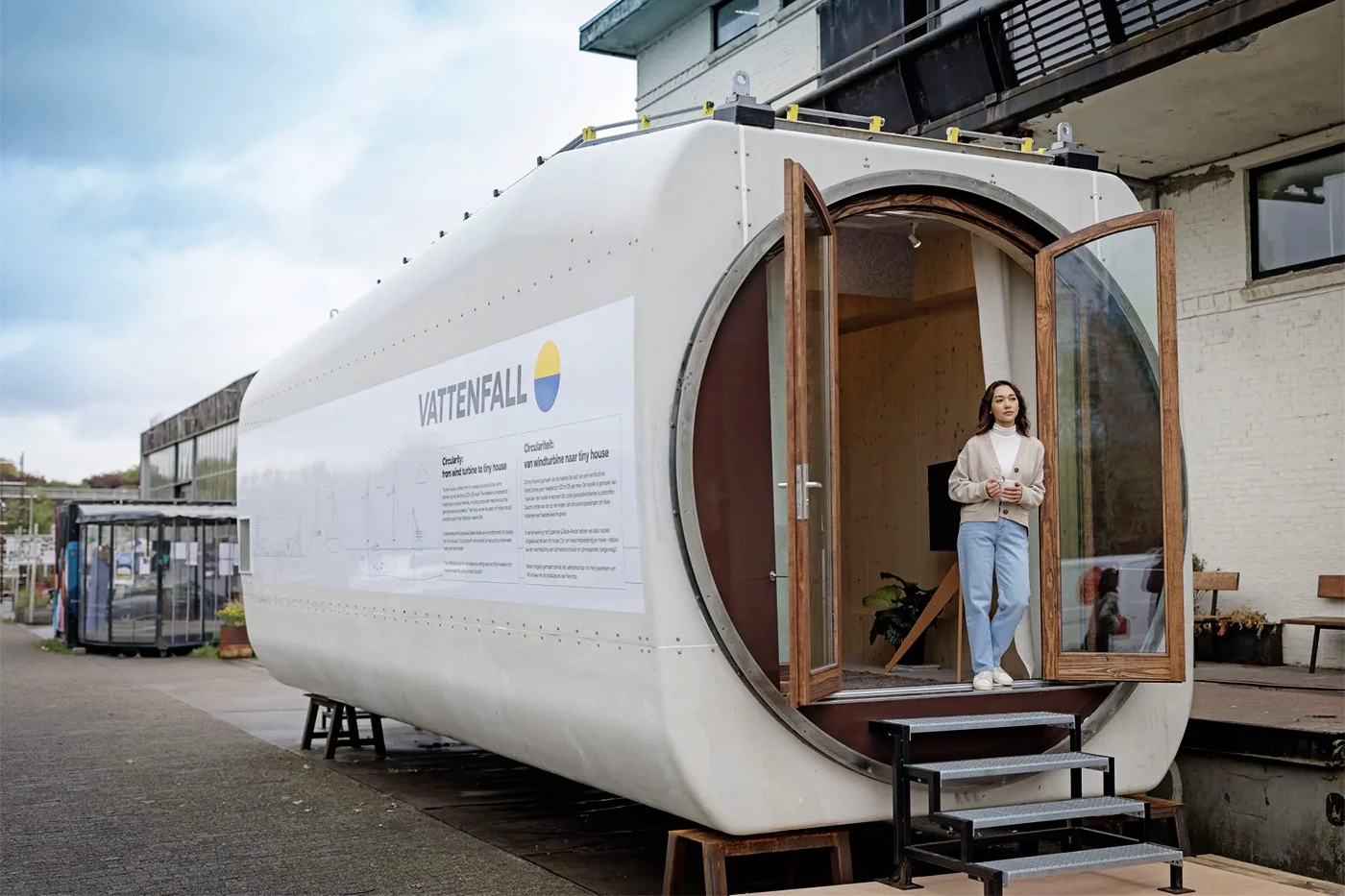You probably knew that wind turbines can be absolutely massive. But did you know the 'nacelle,' which sits at the top of the turbine and houses components like the generator and gearbox, is large enough to live in?
That's the idea behind a recent project to repurpose decommissioned turbines. European energy company Vattenfall, in partnership with international architecture collective Superuse Studios, is exploring what's possible with these old machines by building a tiny house in a nacelle. It's adorable, and if you find yourself in the Netherlands this month, you can check it out at Dutch Design Week 2024 in Eindhoven.
Superuse picked a nacelle from a Vestas V80 2-MW turbine that ran for 20 years at the Austrian Gols wind farm, and had it brought down from its perch 328 ft (100 m) off the ground.
This nacelle is 13 ft (4 m) wide, 32 ft (10 m) long, and 10 ft (3 m) high, making for approximately 376 sq ft (35 sq m) of living space inside. It's possibly among the smallest nacelles you'll come across; newer turbines that produce more power have substantially larger parts. So if this makes for a usable home, a bigger nacelle will be even easier to transform and live in.
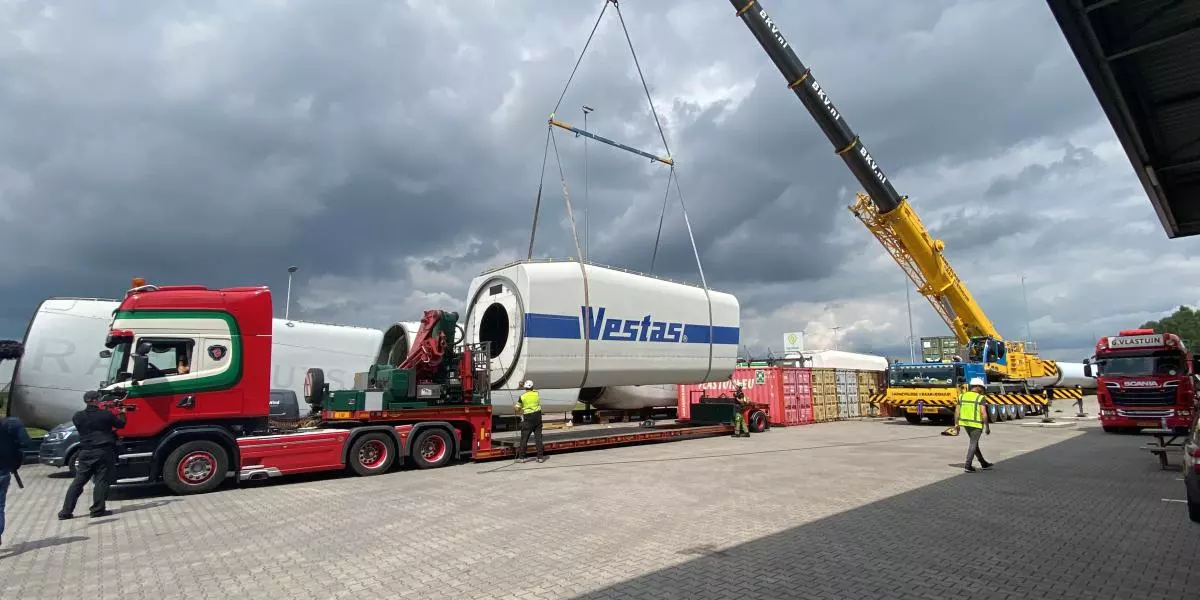
Putting it all together
A nacelle makes for a good foundation, since it's watertight and lightweight. Working with a range of partner firms, Superuse kitted out the 'Nestle' with electricity, plumbing and insulation. This shell is made of glass fiber reinforced plastics, which means it's durable – but also hard to recycle. That makes it a good candidate for repurposing.

Four solar panels on the roof deliver 1,800-W peak power, enough for the house. There's also a solar-powered water boiler for washing and showering, a heat pump for air conditioning, a decentralized ventilation system that uses compact wall-mounted panels, and even an EV charging point on the exterior.
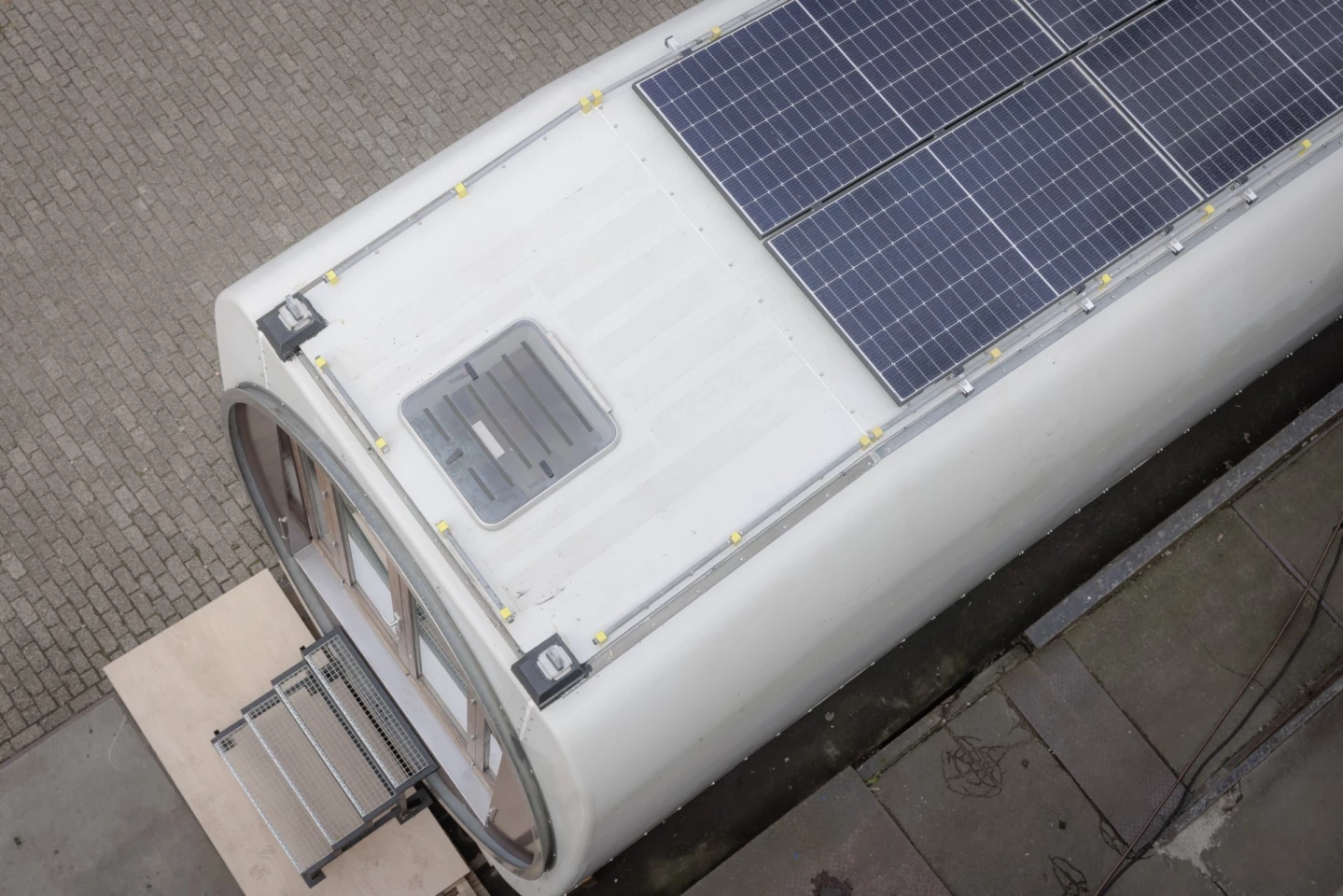
Next, the team put in a wooden interior complete with a kitchenette, bathroom, and a combined sleeping and living area. For this exhibition, the home was furnished with sustainably produced and second-hand furniture.
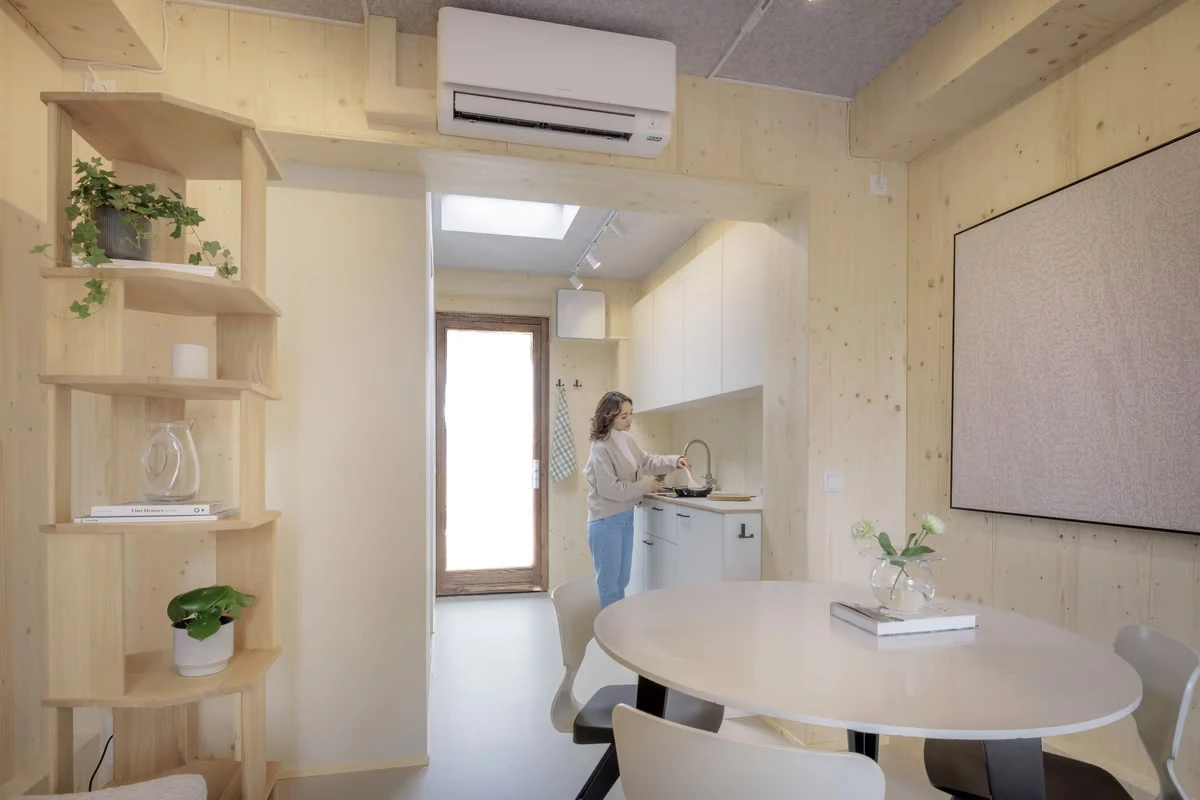
There's even a table made of a recycled material that came from an old wind turbine blade. You can get a look inside in the short promo clip from Vattenfall below.
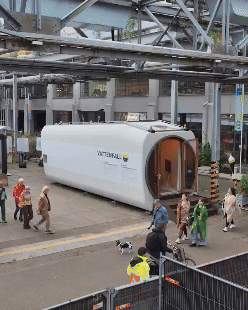
Jos de Krieger, partner at Superuse, explained that this project shows the path for getting even more utility out of wind turbines in the future. "At least ten thousand of this generation of nacelles are available, spread around the world," he said. "Most of them have yet to be decommissioned. This offers perspective and a challenge for owners and decommissioners. If such a complex structure as a house is possible, then numerous simpler solutions are also feasible and scalable."
That should get tiny home enthusiasts – and proponents of circularity – excited about the future of wind energy. I, for one, can't wait for when this massive 20-MW offshore wind turbine in China can be decommissioned to make a more expansive, less tiny home.
Source: Vattenfall

